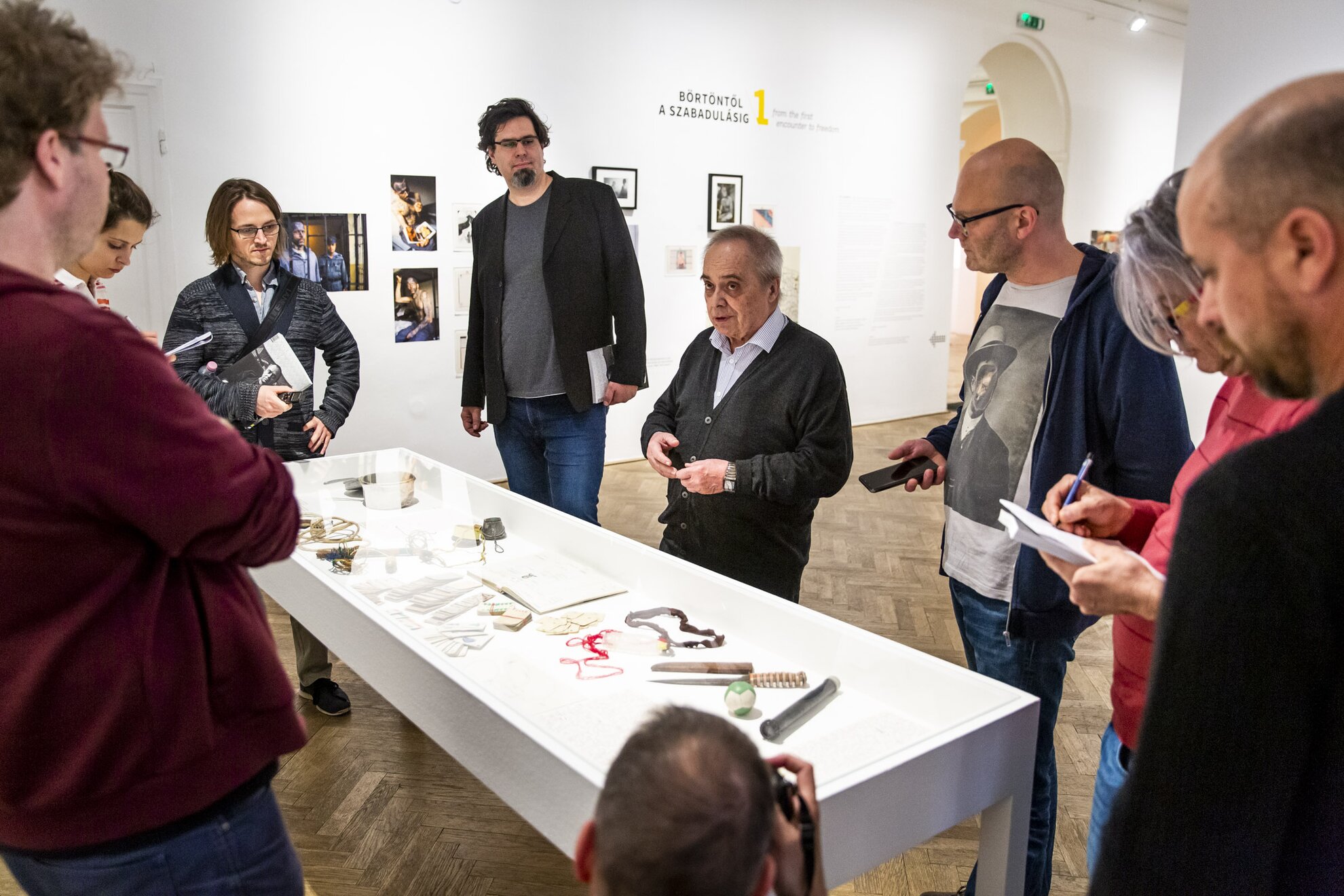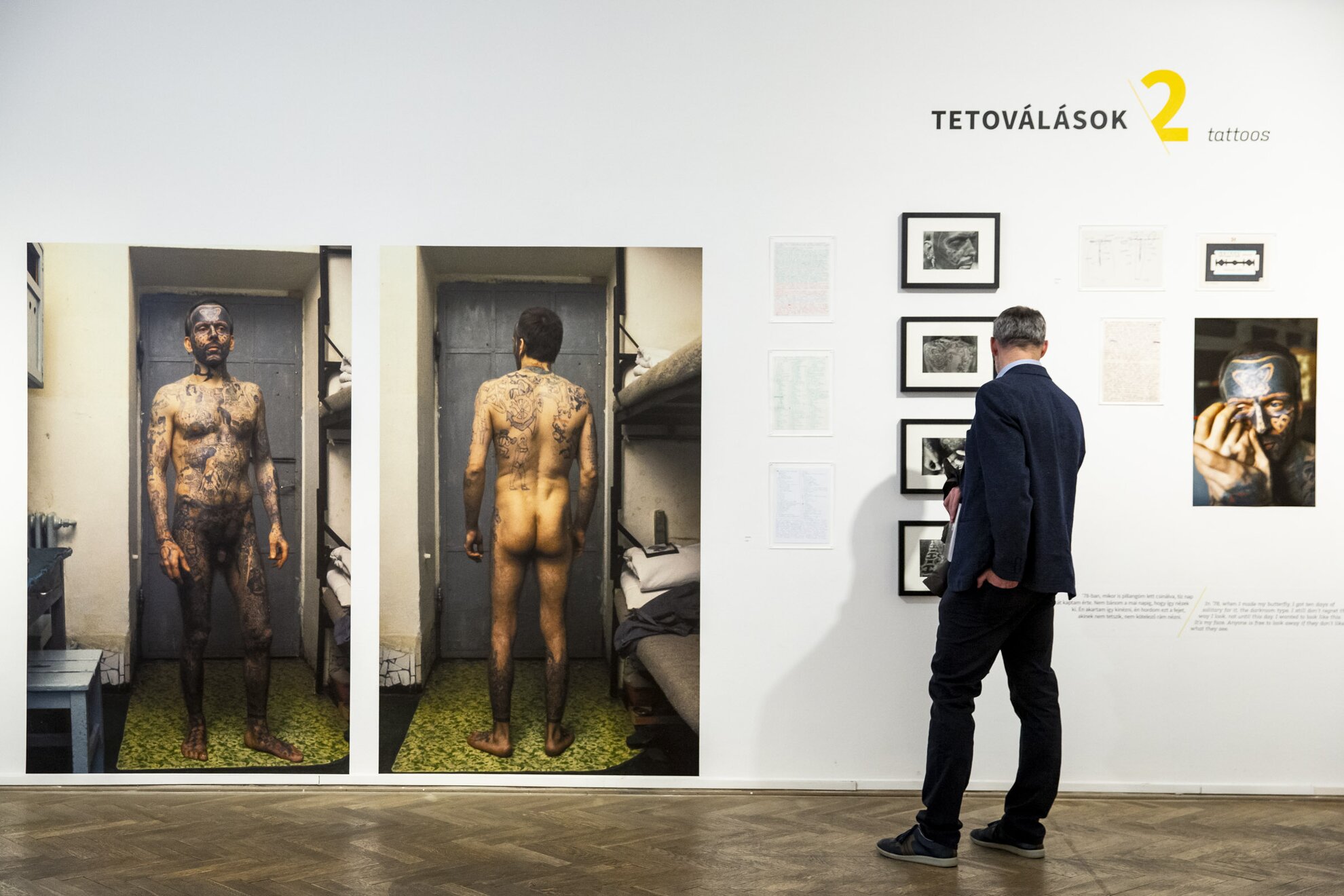
Photojournalist Tamás Urbán has two passions. One of them is photography, the other one is collecting and organising. The former allowed him to meet the subject of this photo series, who then became a good friend. The latter helped him keep many interesting artefacts belonging to the ill-fated Butterfly, including his journal, his drawings, his self-made crossword puzzles and card games, and a bunch of other personal belongings such as a knife and a telescope. Also included at this unique show are descriptions of Butterfly’s various inventions, including a tattoo machine, and some prototypes.

According to curator István Virágvölgyi, the initial connection between subject and photographer was based on their mutual resistance to convention. Butterfly built his entire life upon this premise, transforming his exterior to reflect his rebellious nature. Tamás, on the other hand, has been pushing norms and boundaries through his art, elevating himself from the sea of mainstream photographers. As Butterfly wrote in his diary: “Photography is for Tamás what tattoos were for me. Mania. He’s a manic photographer”.

Tamás Urbán certainly has an intense passion for his work, and not only when capturing Butterfly. During the great snowfall in Hungary in 1987, the entire country was frozen. Tamás moved into a paramedics’ centre, so he could be alert to every situation. In the '90s, he got himself a jeep to be able to get to every photo-worthy scene first.

But to return to the tattooed outsider, Butterfly, this is his reaction upon first meeting the photographer: “’My name is Pillangó, the Hungarian Butterfly, but my real name is Ferenc Deák. Not the national hero, the so-called wise man of the nation, more like the national felon’”. Butterfly led a errant life, spending 40 years of it locked away in juvenile detention or prison. Tamás met him when he was serving time at Szeged’s Csillag jail in 1988, and began documenting him from that point until his death. He captured his release in 1989, the commune he lived in, his performances with Hungarian band Sziámi at Budapest’s underground club Fekete Lyuk, and his appearance on the Friderikusz talk show, filmed at the same community centre. There are images showing Butterfly while having sex and doing yoga. He loved yoga and women loved him. One of the best-known pictures was taken while he was at the Széchenyi Baths, surrounded by a crowd staring him at him as if he was an alien.

He made his first tattoo, the butterfly on his forehead, for himself in 1978, earning him ten days in solitary confinement. The tattoos quickly started appearing on his entire body, representing his anti-establishment ideology. As Tamás explained, even though Butterfly caused plenty of trouble, often his appearance alone got him into prison. Butterfly gave a detailed list of his tattoos in his journal, including the 2,000 swastikas. He wasn’t a Nazi, but as punks did in Hungary, he meant to provoke the public with this symbol.

Although Tamás tried to help Butterfly live a normal life after his release, encouraging him to write, draw, managing his finances and even getting him a flat, he couldn’t save him from his tragic end. As Butterfly wrote: “Some keep banging on about the time when I grow old. About what I will do then. Nothing, I say, I’ll never be old anyway. I will always be young and I’ll die young”.

His prophecy came true in the summer of 1994, when he was out drinking with his friends beside the Danube, and never came back after trying to swim to the other side. His body was found one week later at Chain Bridge, where a chilling shot was taken of his lifeless hand. In his will that he wrote shortly before the accident, he bequeathed his head to Tamás. His ashes were scattered into the river.
The exhibition Tamás Urbán: Unwanted Butterfly runs until 5 April and will later be adapted as a book.
Robert Capa Contemporary Photography Center
District VI. Nagymező utca 8
Open: Daily 11am-8pm




